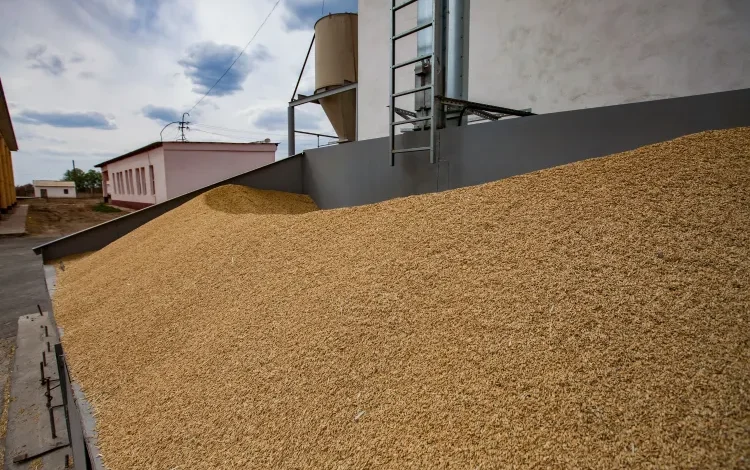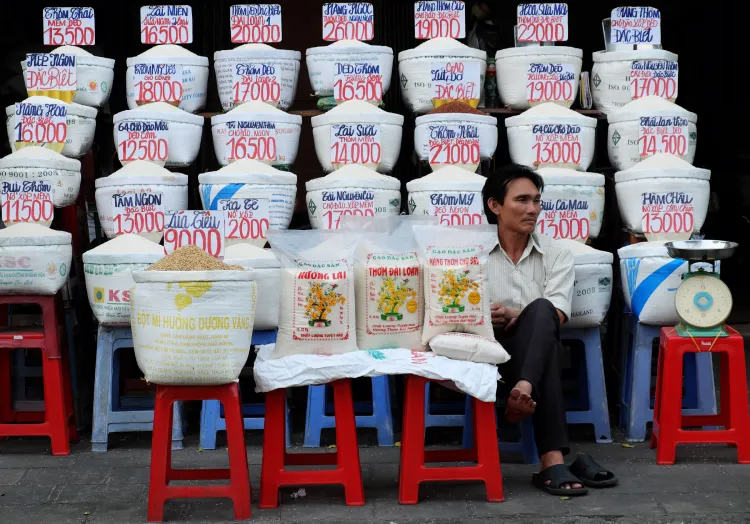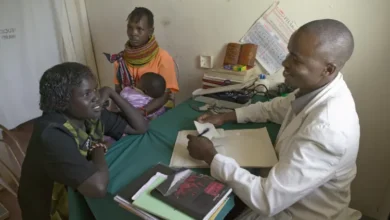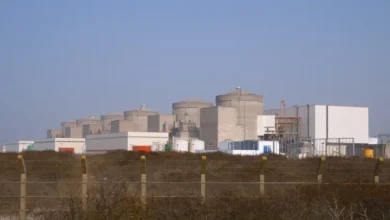
Global Rice Prices Hit 8-Year Low as Oversupply Meets Weak Demand
Record Harvests in India, Thailand, and Vietnam, Coupled With Easing Export Restrictions, Push Global Rice Prices to Their Lowest Since 2017
Global rice prices have plunged to their lowest levels in eight years, as a surge in supply from major producers collides with declining import demand. Export prices for Thai 5% broken white rice — considered a global benchmark — fell to about $392 per tonne in July 2025, marking a 6% drop in a month and a year-on-year decline of more than 35%, according to IMF and trade data.
The UN’s FAO All Rice Price Index stood at 103.5 points in July, down nearly 23% from the same month in 2024, reflecting a consistent downward trend this year. Analysts say the slide has been driven primarily by India’s decision to lift its export restrictions late last year, after producing a record crop in 2023–24.
India’s warehouses held an estimated 63 million tonnes of rice in April, well above recent averages. As a fresh bumper crop approaches, the government is reducing its stockpile by releasing rice into domestic markets and channeling part of it toward ethanol production, creating space for the upcoming harvest.
Supply Surges Across Asia

The FAO projects global rice production for the 2024–25 marketing year at 543.6 million tonnes, with total supplies climbing to a record 743 million tonnes.
“India’s policy shift is the main driver of the price collapse,” said Oscar Tjakra, senior analyst at Rabobank. “This comes on top of exceptional production in Thailand and Vietnam, pushing global availability to unprecedented levels.”
India’s rice sector has benefited from extensive irrigation coverage in key growing regions, making crops more resilient to erratic weather patterns. Farmers are increasingly adopting high-yield seed varieties and expanding acreage, aided by a robust minimum support price (MSP) system and state incentives.
These measures have effectively “monsoon-proofed” India’s rice production, allowing the country to dominate global exports even during adverse weather years.
Importers Step Back, Pressuring Prices
While supply has surged, import demand has slowed considerably. In 2024, Indonesia, a leading global rice importer, secured much of its supply early and has so far stayed out of the market in 2025. The Philippines, another major importer, has suspended rice imports until October to protect local producers during the main harvest season.
With two of Asia’s biggest buyers on the sidelines, the market has struggled to absorb the excess stock. Indonesia and the Philippines — two of Asia’s biggest rice importers — are currently absent from the market, leaving little demand for white rice.
This imbalance is expected to persist, with Mohanty forecasting a further 10% decline in prices unless disrupted by a significant geopolitical or climatic shock.
Farmers Squeezed, Consumers Benefit
For consumers, the downturn offers relief after several years of elevated food costs, particularly in import-dependent economies where rice is a staple.
However, for farmers outside India, the impact is severe. Without guaranteed minimum prices or subsidies, many growers in Southeast Asia face shrinking margins amid rising input costs and inflation. The prolonged price slump could lead to reduced planting in the next cycle, potentially affecting future supply.
Analysts warn that while current stocks provide a cushion, any sustained cutback in production combined with adverse weather events could reverse the price trend over the longer term. For now, though, global rice markets remain firmly in surplus, with prices unlikely to recover meaningfully in 2025.
[Source]




